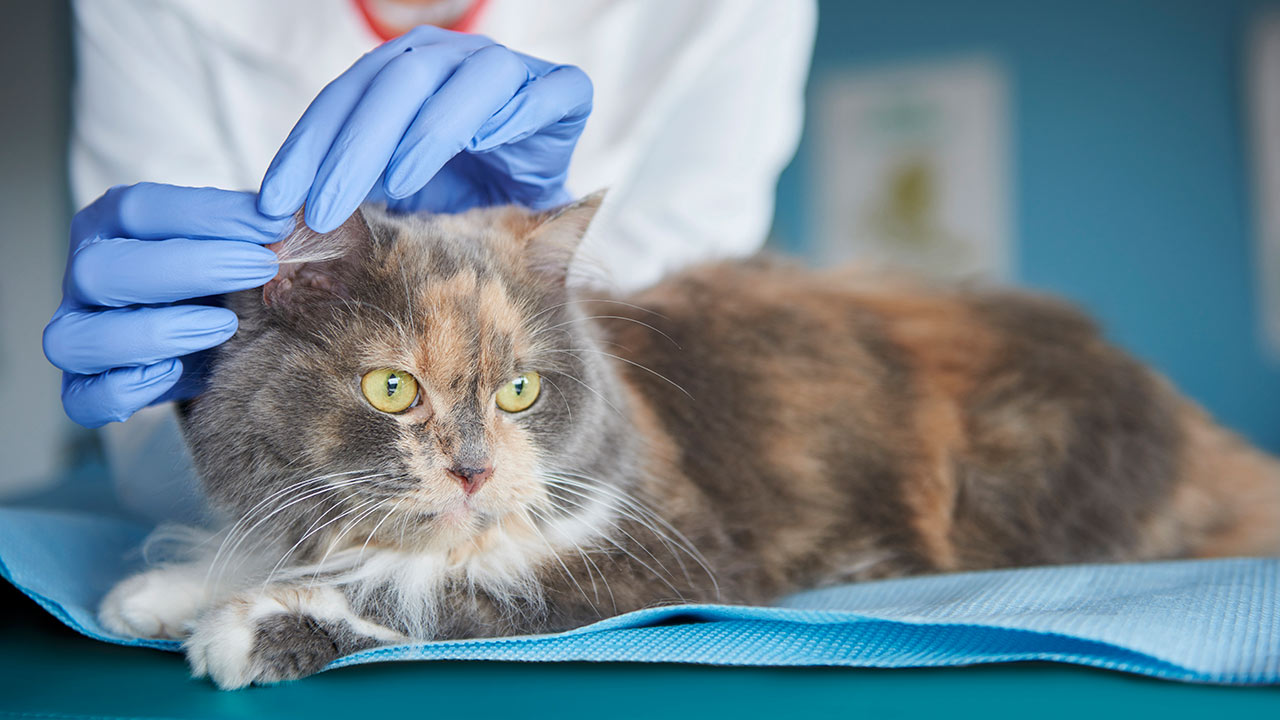Does your dog spend most of the day on the couch relaxing or does your cat find it funnier to chase the dust on your floor, than birds or mice in the wild? Then you might think that your pet is safe and you don’t have to be concerned about ticks and fleas. But sadly, that’s not true.
All dogs and cats are not at equal risk of getting parasites like ticks and fleas. The risk is based on where you live and what lifestyle your pet has. Think about the dog often exploring forests and countryside areas, or parks with many other dogs – that dog is at obvious risk. The same goes for the cat exploring the residential neighborhood on their own paws – but also the sofa loving dog who is mostly let out in the garden to pee is at risk.
Depending on where you live in Europe, more parasites, like mosquitos transmitting heartworm or sandflies transmitting Leishmania, can constitute a risk even for indoor-only cats. Remember to tell your vet if you are planning to travel with your pet since travelling can have a huge impact on the risk.
The fleas you might see on your pet are the tip of the iceberg.
Fleas are an annoyance since flea bites cause severe itching, damage to the skin, sometimes allergic skin disease, and they can also transmit infectious diseases to pets and their owners. The adult fleas can be hard to find on the pet since they move very fast through the fur. It is best to use a flea comb to catch them, otherwise they can easily hide from you. Another thing you might find while combing your pet is flea dirt. This is also a sign that there are fleas on your pet, even if you did not find the fleas while combing.

Not sure if you have seen a sand or flea dirt? When you put the flea dirt on a damp piece of toilet paper, you will see a reddish-brown circle starting to form around the flea dirt.
In addition to the characteristic itching, you can also get an indication your pets have fleas if you or your kids get red, itchy flea bites on your ankles.
Did you know that veterinarians report finding fleas on pets all year round?
The adult fleas you see on your pet are just the tip of the iceberg. They live on pets but are only a small part of the problem. All the young fleas – the eggs, the larvae, and the pupae – live in the environment and they are accountable for at least 95% of the flea burden. So, for every flea you see on your pet, many more are just waiting to get their chance to grow up and feed on your pet, or you or somebody else in your household.
An adult female flea can lay up to 50 eggs a day, so only a few fleas can quickly infest your home and cause a large flea burden. In such cases it takes months of continuous treatment to get rid of the entire flea population.
Fleas thrive indoors all year around, but pets can also easily catch them outdoors and bring them home. If you have more than one pet e.g., a cat and a dog, it is important to protect all of them preventatively against fleas since each of them can be responsible for bringing fleas home.
Ticks can also be found in gardens and parks.
There are many species of ticks that can suck blood from pets and their owners. Most of them live originally off blood from wild animals, but they are not picky eaters, so they also feed on dogs, cats, and us. Ticks are not only found in forests and rural areas, but they are also very common in cities where our pets, foxes, local birds, rodents, and other animals support the tick lifecycle. In addition, each year migratory birds transport millions of ticks around the world, and they can easily drop a tick off in your garden or in your local park.
Each female tick can lay thousands of eggs, so not only a flea burden but also a tick burden can quickly become established in suitable surroundings like your garden or your local park.
There is a special species of tick, the kennel tick, that prefers dogs for every bloodmeal and that is suited to live its full lifecycle indoors. The kennel tick is present in some European countries, and has a very fast lifecycle, developing from egg to adult in just a few months – for most other tick species it takes several years in nature. One adult female tick lays thousands of eggs, so the kennel tick can become a problem in homes very quickly.
Ticks are of special concern because of the disease-causing microorganisms and viruses they can transmit to animals and humans, and thereby can sometimes cause severe disease and in some cases fatal infectious diseases. Ask your vet for preventative treatment options for your pets and remember to check yourself and your kids for ticks once daily if you have been in a tick area.
So, is checking your pets for ticks daily enough to protect your pets? Research suggests that visual inspection is an insufficient measure for tick control1. Remember that ticks can be very small depending on their development stage2 and transmission of disease-causing microorganisms usually starts after 24-48 hours1.
Your vet can help you to decide how to protect your pets.
Where you live determines what parasites are relevant and the lifestyle your pet has, are the two most important factors in determining what to do and how to protect your pet.
Pets that go outside (even if it’s only in your garden, terrace or patio) are at risk of encountering ticks and fleas and should be protected preventatively.
Indoor pets have a lower risk of encountering fleas and ticks, but they can still be exposed to the parasites other animals bring into their homes. Once inside, fleas can cause an infestation on unprotected animals. Additionally, flying parasites like mosquitoes and sandflies can enter homes through open windows, and may pose a risk to indoor pets.
Don’t just assume your pet is safe – discuss protection against parasites (and the pathogens they may carry) with your veterinarian!
Five things you should know about parasites
- Not sure if you have seen a sand or flea dirt? When you put the flea dirt on a damp piece of toilet paper, you will see a reddish-brown circle starting to form around the flea dirt.
- In addition to the characteristic itching, you can also get an indication your pets have fleas if you or your kids get red, itchy flea bites on your ankles.
- For every flea you see on your pet, many more are just waiting to get their chance to grow up and feed on your pet, or you or somebody else in your household.
- If your pet grooms themselves and ingests a flea, it can become infected with tapeworm. So, fleas are not just a nuisance to your pet.
- Research suggests that visual inspection is an insufficient measure for tick control
REFERENCES
- Probst J. et al., Parasites & Vectors 2023; 16(1): 70. Year‑round tick exposure of dogs and cats in Germany and Austria: results from a tick collection study. (https://pubmed.ncbi.nlm.nih.gov/36797779/ Date accessed June 2024)
- ESCCAP Guideline 3. Control of Ectoparasites in dogs and cats. 7th Edition, January 2022. (cgqtqpf1_0720_ESCCAP_GL3__English_v19_1p.pdf Date accessed June 2024)





